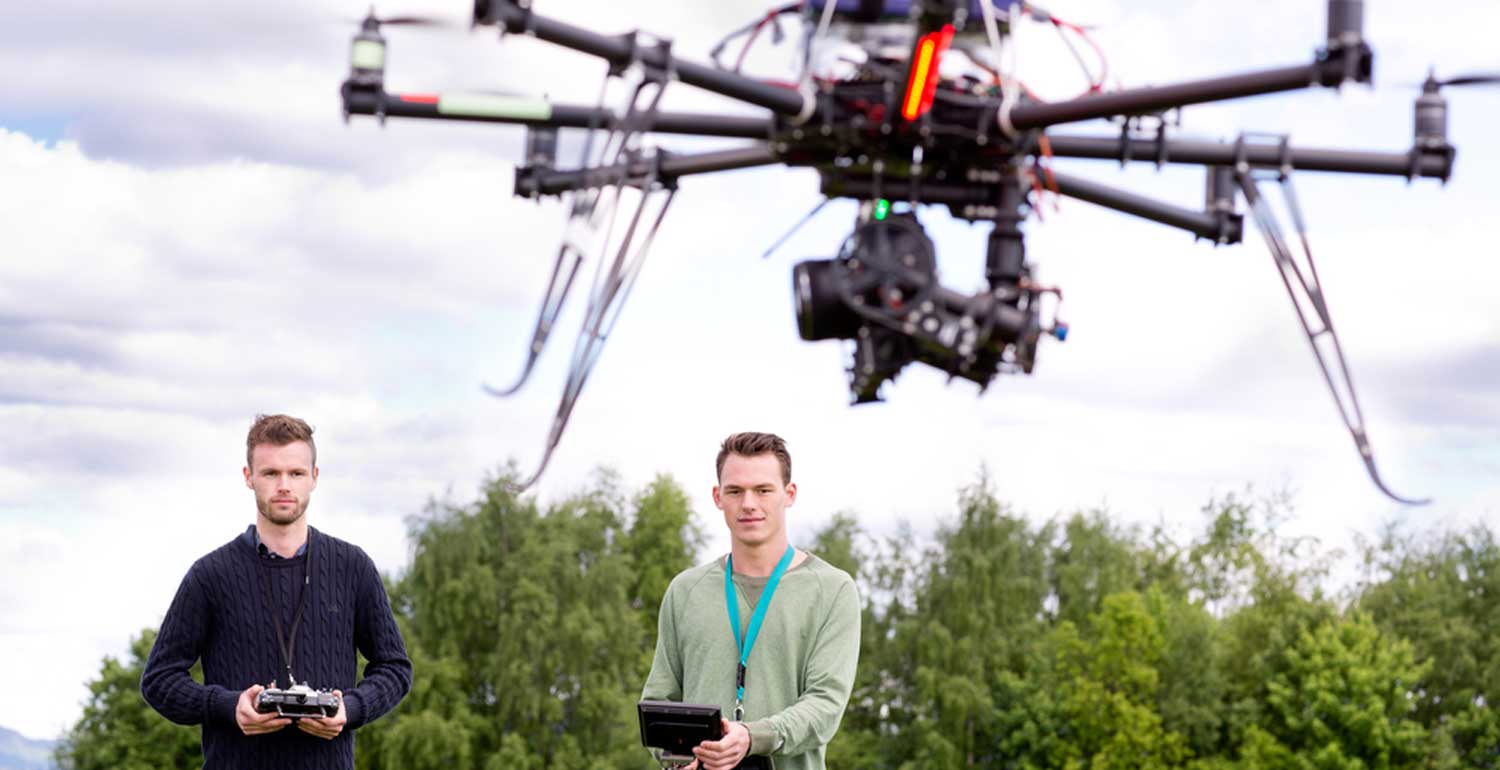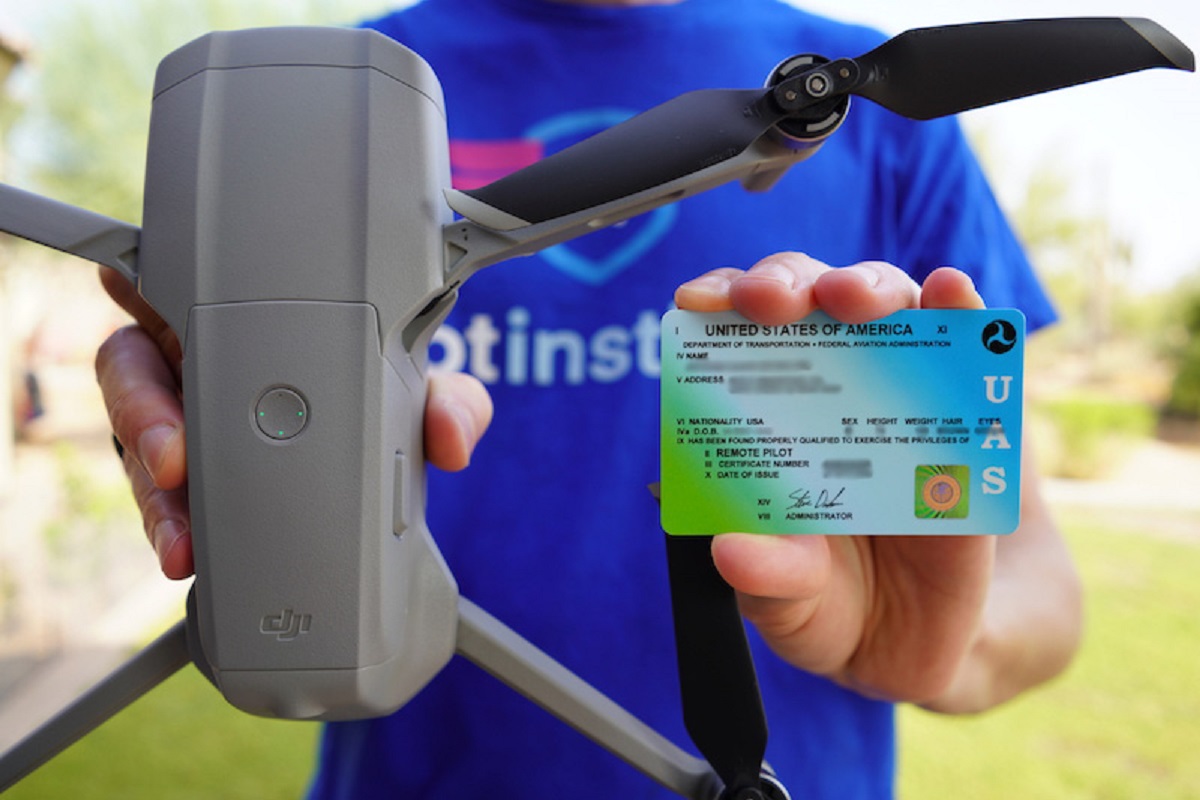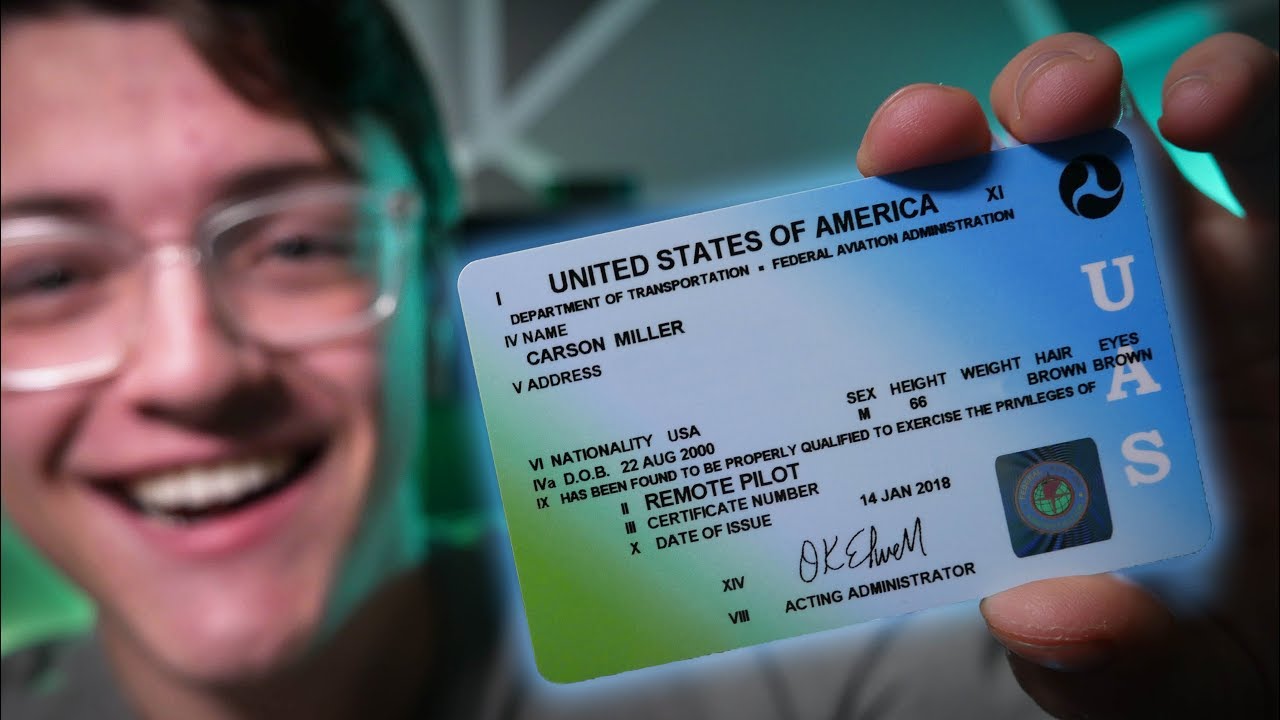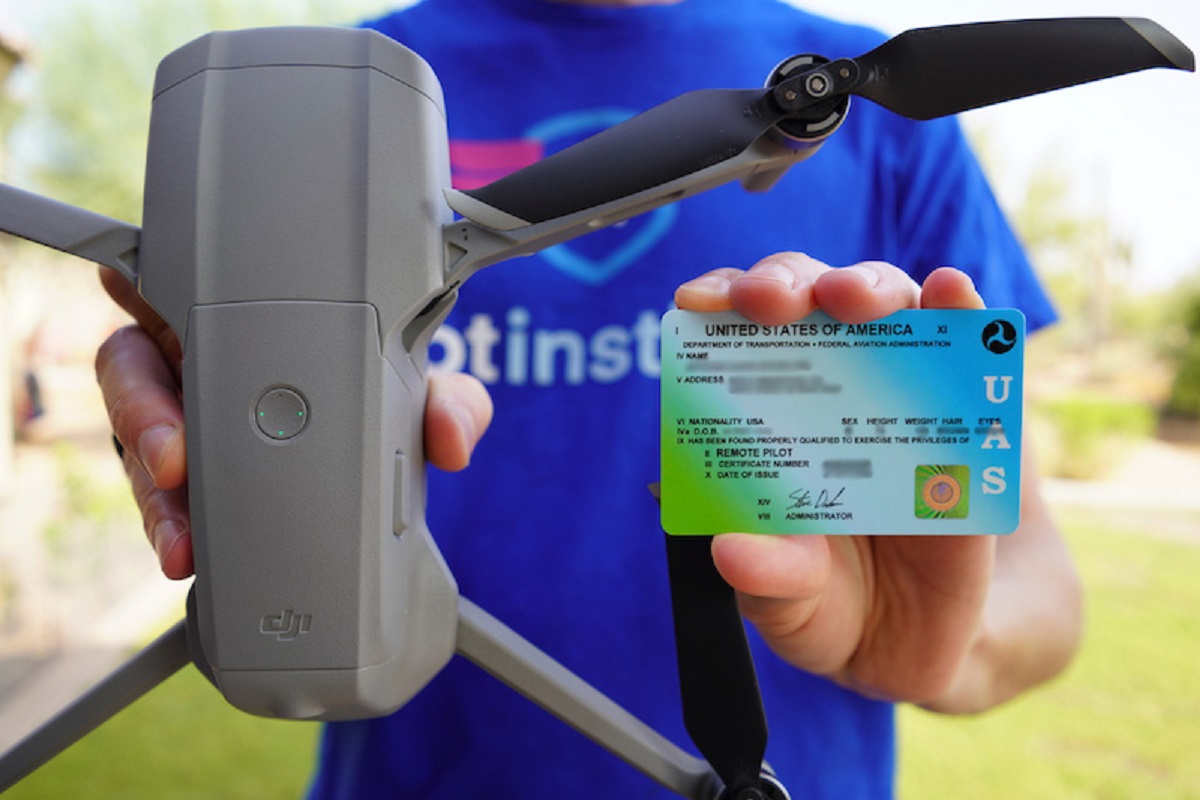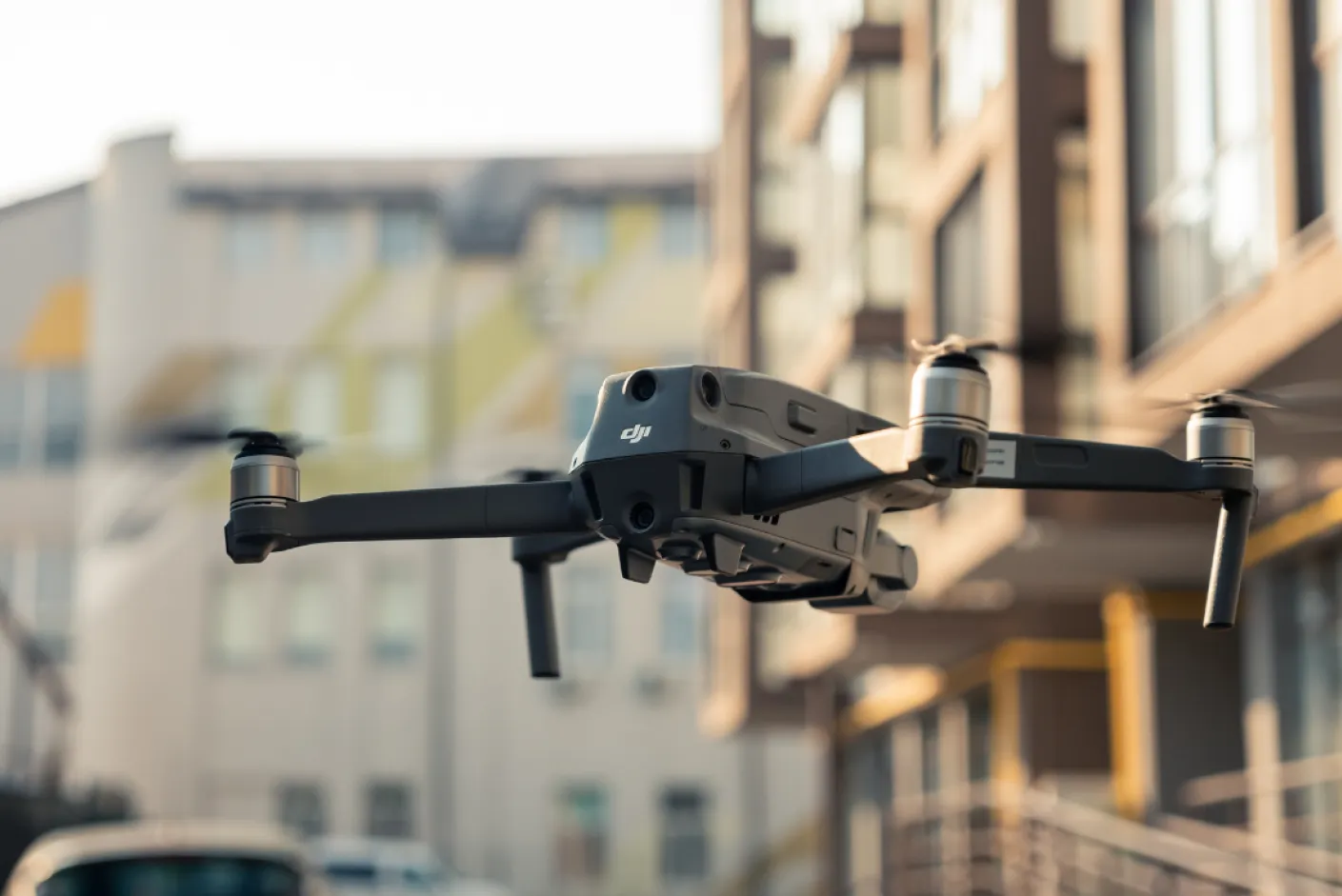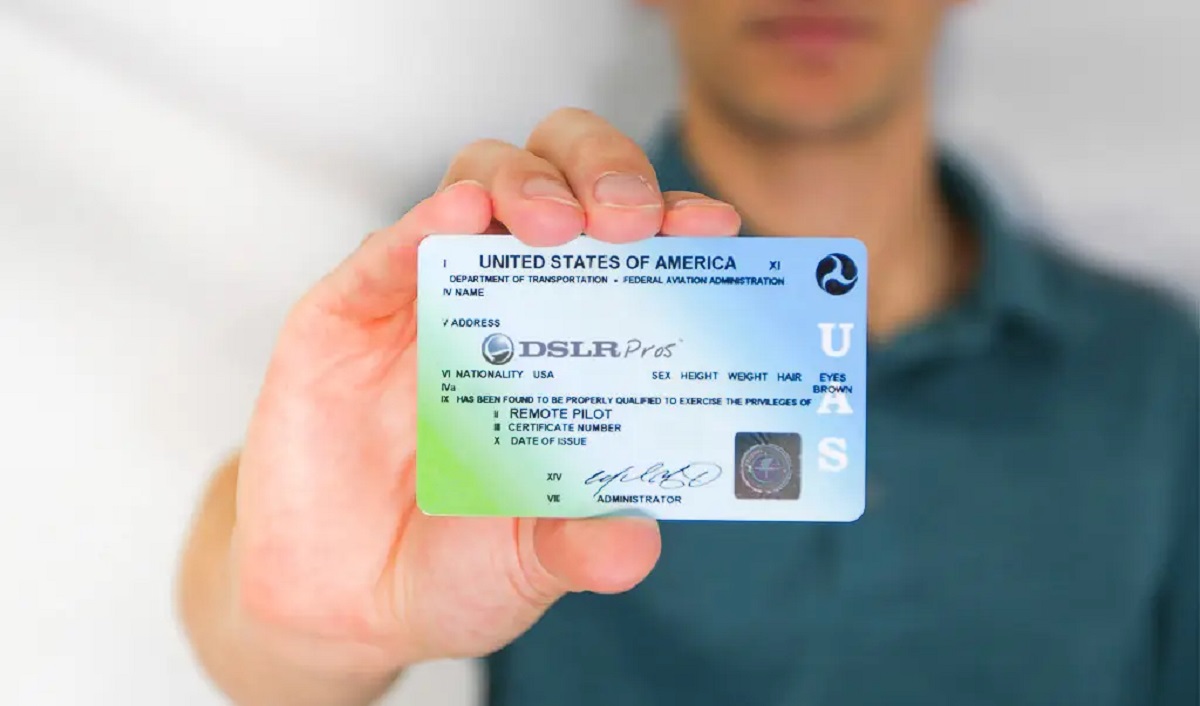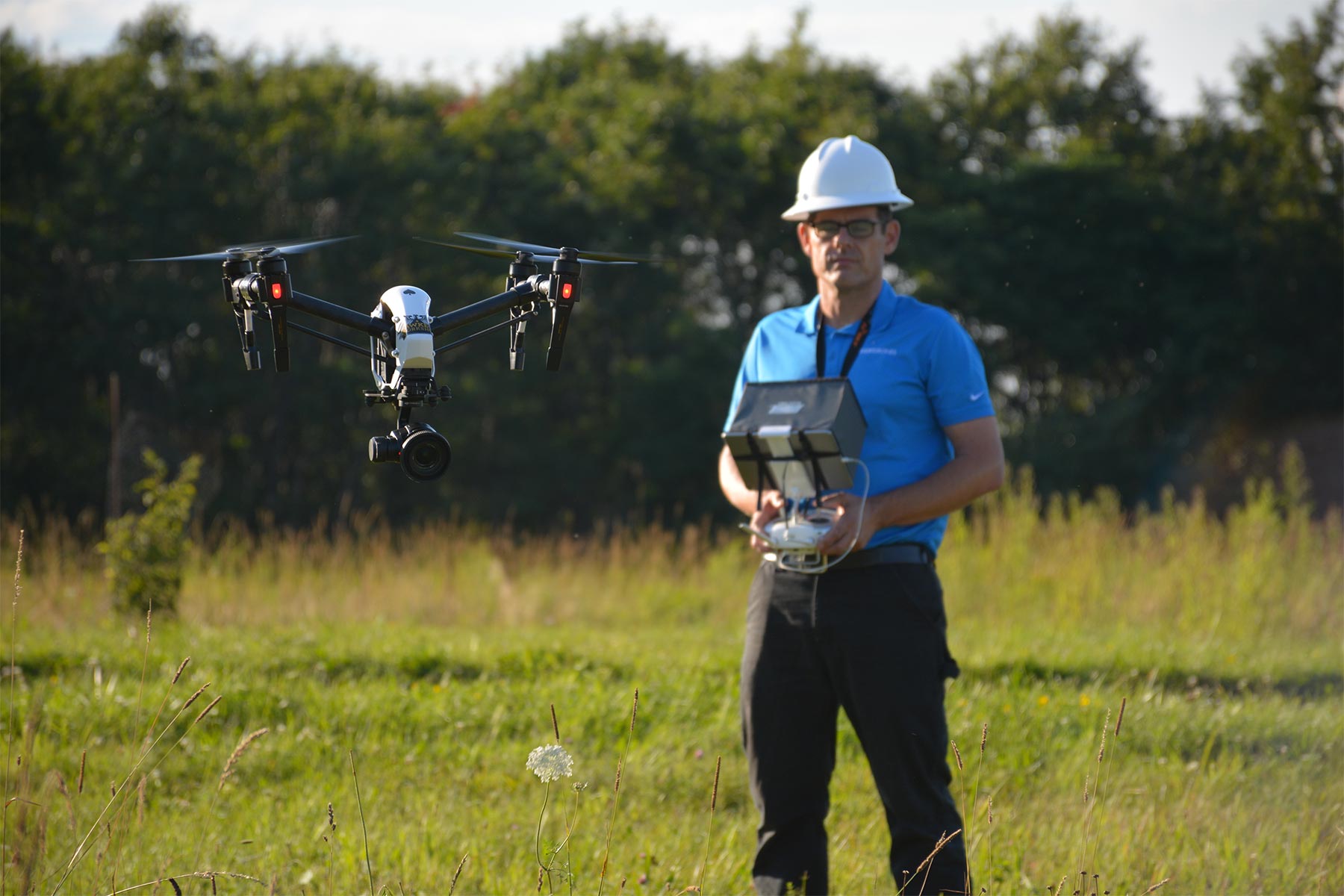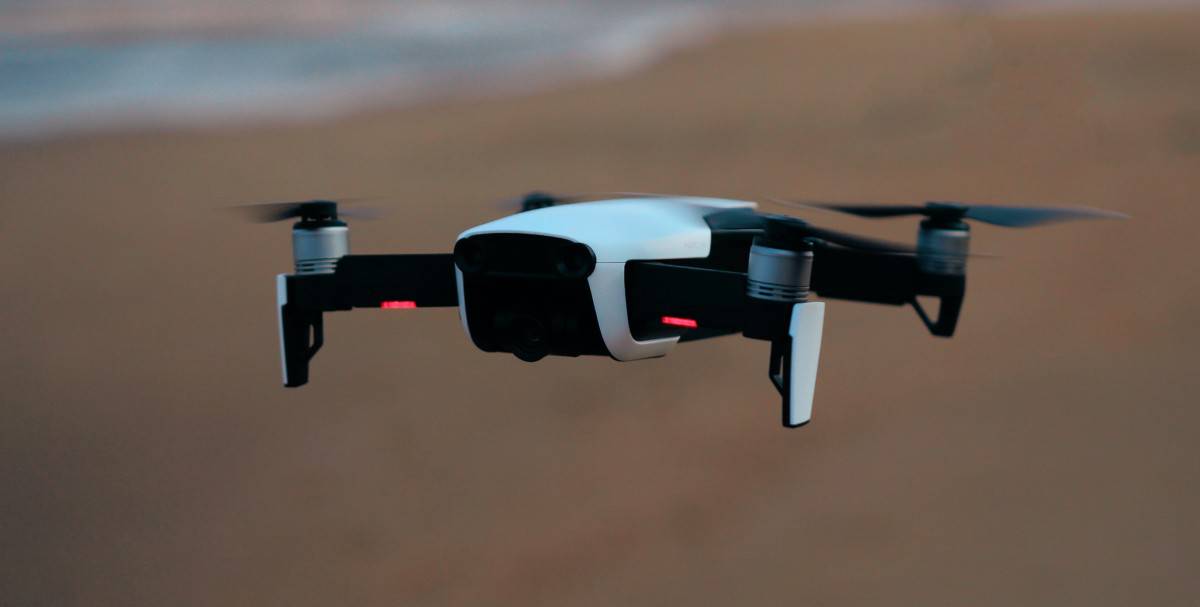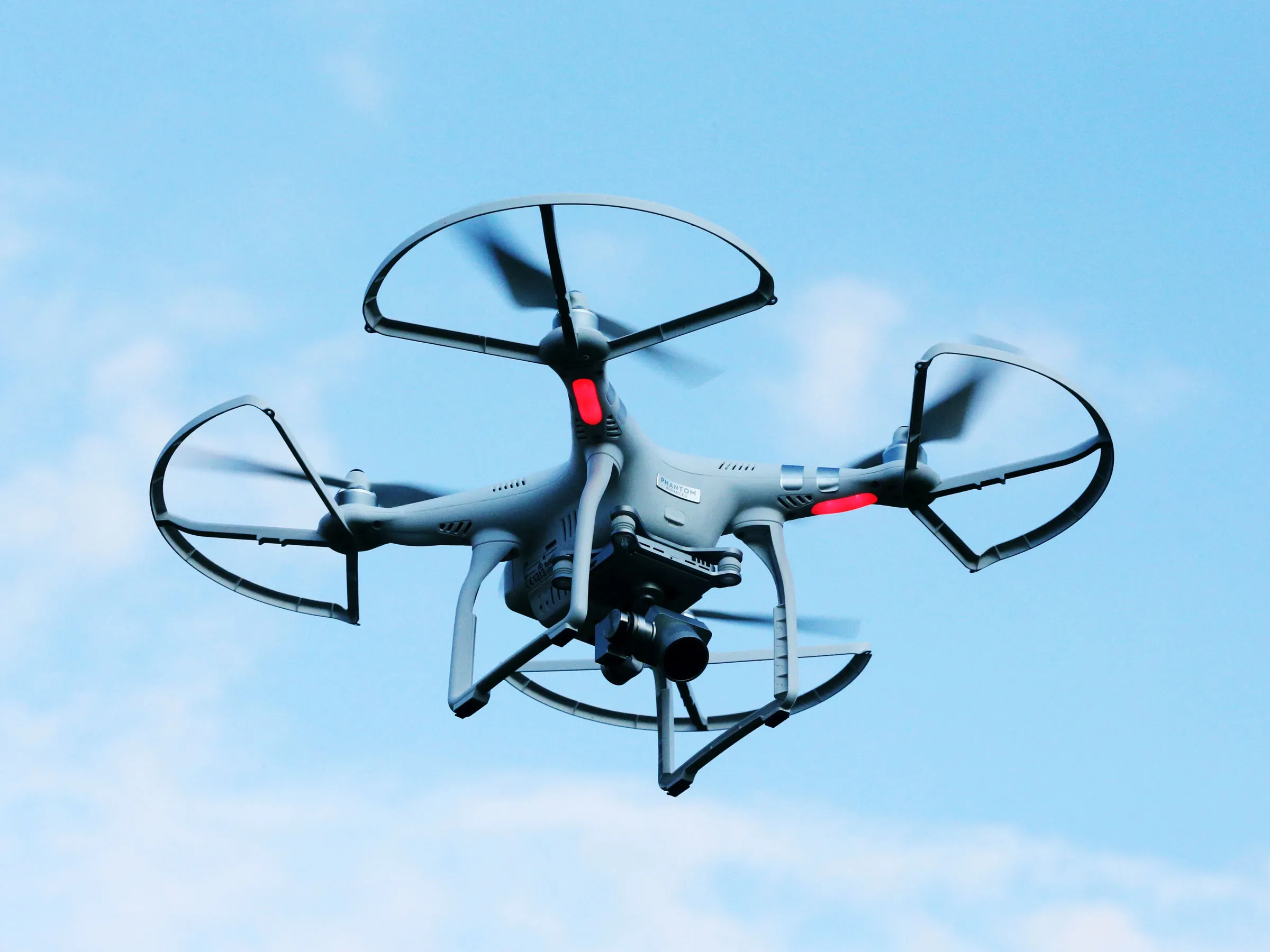Introduction
Welcome to the world of drones! As the popularity and applications of drones continue to soar, so does the demand for licensed drone pilots. Becoming a licensed drone pilot opens up a world of exciting opportunities, whether it’s capturing stunning aerial photography, conducting inspections, or even assisting in search and rescue missions.
So, what exactly is a licensed drone pilot? A licensed drone pilot is an individual who has successfully completed the necessary training, passed a knowledge test, and obtained a Remote Pilot Certificate issued by the Federal Aviation Administration (FAA). This certification allows you to legally operate drones for commercial purposes, ensuring both safety and compliance with regulations.
Why should you consider becoming a licensed drone pilot? The answer is simple: it provides you with a competitive edge in the booming drone industry. With a license, you can legally offer your services to clients, showcasing your professionalism and adherence to regulatory standards. Additionally, having a license opens doors to new opportunities, as many organizations and businesses require licensed pilots for various projects.
But how do you become a licensed drone pilot? What are the requirements and steps involved? In this article, we will explore the process in detail, providing you with the knowledge and guidance to embark on your journey towards becoming a licensed drone pilot.
What is a licensed drone pilot?
A licensed drone pilot is an individual who has obtained a Remote Pilot Certificate from the Federal Aviation Administration (FAA) and is authorized to operate drones for commercial purposes. This certification ensures that the pilot has met the necessary requirements and possesses the knowledge and skills to fly drones safely and responsibly.
Being a licensed drone pilot carries many benefits. Firstly, it allows you to legally operate drones for commercial purposes, such as aerial photography, videography, surveying, mapping, and inspections. Without a license, operating a drone for any commercial activity is illegal and may result in fines or even legal consequences.
Secondly, having a license demonstrates your professionalism and commitment to safety. Clients and employers often seek licensed drone pilots as it provides reassurance that you have undergone proper training and understand the regulations and guidelines set forth by the FAA. It sets you apart from hobbyist drone operators and enables you to offer your services with confidence.
Furthermore, being a licensed drone pilot opens up a multitude of opportunities. Many industries, including real estate, construction, agriculture, and film production, rely on drone technology for aerial data collection and visual content. By obtaining a license, you position yourself for potential partnerships, contracts, and employment in these sectors.
It is important to note that the FAA distinguishes between recreational and commercial drone operations. If you are flying a drone for personal enjoyment or for a hobby, you do not need a license. However, if you plan to use a drone for any kind of compensation or to support a business activity, a Remote Pilot Certificate is required.
Overall, becoming a licensed drone pilot not only allows you to legally operate drones for commercial purposes but also demonstrates your professionalism and opens doors to exciting career opportunities. By obtaining a license, you become a part of a growing community of drone enthusiasts and professionals, contributing to the safe and responsible integration of drones in various industries.
Why should you become a licensed drone pilot?
Becoming a licensed drone pilot offers numerous advantages and opportunities that make it a worthwhile pursuit. Whether you are a drone enthusiast or looking to explore new career avenues, here are some compelling reasons why you should consider becoming a licensed drone pilot:
1. Legal Compliance: Operating drones for commercial purposes without a license is against FAA regulations. By becoming licensed, you ensure that you are operating within the legal framework, avoiding potential fines and legal complications.
2. Professional Credibility: A license adds credibility to your drone piloting skills, distinguishing you as a professional in the field. It showcases your commitment to safety, knowledge of regulations, and adherence to industry standards, making you a highly sought-after pilot.
3. Expanded Career Opportunities: Obtaining a license unlocks a wide range of career paths in various industries. From aerial photography and filmmaking to infrastructure inspection and agriculture, licensed drone pilots are in high demand due to the versatility of drone applications.
4. Entrepreneurial Ventures: With a license, you can start your own drone services business. This provides the opportunity to work independently, set your own rates, and build your brand as a professional drone pilot.
5. Access to Specialized Projects: Many projects and contracts require licensed drone pilots due to safety and regulatory requirements. By obtaining a license, you become eligible for exciting projects such as aerial surveys, construction site monitoring, and search and rescue missions.
6. Networking and Collaboration: Joining the community of licensed drone pilots opens doors to networking and collaboration opportunities. You can connect with other professionals, attend industry events, and share knowledge and experiences, fostering personal and professional growth.
7. Continued Learning: The process of becoming a licensed drone pilot involves gaining knowledge about drone regulations, airspace rules, and flight operations. This continuous learning process ensures that you stay updated with industry developments, enhancing your skills and expertise.
Overall, becoming a licensed drone pilot provides you with the legal compliance, professional credibility, career opportunities, and entrepreneurial potential to excel in the dynamic world of drone technology. It is a testament to your commitment to safety, skill, and professionalism, positioning you for success in this rapidly growing industry.
Requirements for becoming a licensed drone pilot
Before embarking on your journey to become a licensed drone pilot, it is important to familiarize yourself with the requirements set forth by the Federal Aviation Administration (FAA). Meeting these requirements is crucial to ensure that you can legally operate drones for commercial purposes. Here are the key requirements:
1. Minimum Age: You must be at least 16 years old to apply for a Remote Pilot Certificate, which is the FAA-issued license for commercial drone operations.
2. English Proficiency: Since drone operations require effective communication with air traffic control and other pilots, you must be proficient in the English language. This ensures that you can understand and effectively convey instructions and information during flight operations.
3. Pass a Transportation Security Administration (TSA) Background Check: As part of the application process, you will undergo a background check conducted by the TSA. This check ensures that you do not have any disqualifying criminal offenses or links to prohibited activities, as safety and security are paramount in the aviation industry.
4. Obtain a Remote Pilot Certificate: To become a licensed drone pilot, you must obtain a Remote Pilot Certificate. This involves passing a knowledge test administered by the FAA. The test covers topics such as drone regulations, airspace concepts, weather, emergency procedures, and safe operating practices.
5. Successfully Complete a Knowledge Test: The knowledge test is a multiple-choice exam that evaluates your understanding of drone regulations and operational procedures. To pass the test, you must achieve a score of at least 70%. The test can be taken at an FAA-approved testing center or through an FAA-approved online testing provider.
6. Register Your Drone: Prior to operating your drone for commercial purposes, you must register it with the FAA. This registration ensures that your drone is properly identified and linked to your Remote Pilot Certificate.
7. Fly within the Regulations: As a licensed drone pilot, it is crucial to operate your drone within the guidelines and regulations set by the FAA. This includes adhering to airspace restrictions, flying below the maximum altitude limit, maintaining visual line of sight, and following any additional restrictions specific to your operation.
By meeting these requirements, you will be on the path to becoming a licensed drone pilot, capable of operating drones for commercial purposes within the legal framework set by the FAA. It is essential to stay up to date with any changes or updates to the requirements, as the drone industry and regulations continue to evolve.
Steps to becoming a licensed drone pilot
Obtaining a Remote Pilot Certificate from the Federal Aviation Administration (FAA) is a step-by-step process that involves fulfilling certain requirements and completing specific tasks. Here are the key steps to follow on your journey to becoming a licensed drone pilot:
Step 1: Research the rules and regulations
Start by familiarizing yourself with the rules and regulations governing drone operations. The FAA provides comprehensive resources on their website, including the Small UAS Rule (Part 107), which outlines the requirements for commercial drone operations. Ensure that you understand the restrictions, airspace regulations, and operational limitations imposed on drone pilots.
Step 2: Obtain a Remote Pilot Certificate
To become a licensed drone pilot, you need to obtain a Remote Pilot Certificate issued by the FAA. This requires passing the FAA’s knowledge test, which evaluates your understanding of drone regulations, airspace concepts, weather, emergency procedures, and safe operating practices. You can schedule the test at an FAA-approved testing center or take it through an FAA-approved online testing provider.
Step 3: Prepare for the knowledge test
Thoroughly prepare for the knowledge test by studying the FAA’s Remote Pilot – Small Unmanned Aircraft Systems Study Guide. This guide covers all the topics and concepts that will be tested. Additionally, you can find study materials and practice exams online to help you familiarize yourself with the types of questions you may encounter.
Step 4: Schedule and take the knowledge test
Once you feel prepared, schedule your FAA knowledge test at an approved testing center or choose an online testing option. Arrive at the testing center with the required identification documents, and be ready to demonstrate your knowledge by successfully answering the multiple-choice questions within the allocated time frame.
Step 5: Submit your application
After passing the knowledge test, you can proceed to submit your application for a Remote Pilot Certificate on the FAA’s Integrated Airman Certification and Rating Application (IACRA) website. Provide the necessary information, including your test results and identification details, and complete the application process as directed.
Step 6: Pass a background check
As part of the application process, you will undergo a background check conducted by the Transportation Security Administration (TSA). This check ensures that you do not have any disqualifying criminal offenses or links to prohibited activities.
Step 7: Receive your Remote Pilot Certificate
If your application is approved and you pass the background check, you will receive your Remote Pilot Certificate from the FAA. This certificate serves as proof of your qualification to operate drones for commercial purposes. Make sure to keep a copy of your certificate with you whenever you are operating a drone.
By following these steps diligently, you will successfully navigate the process of becoming a licensed drone pilot. It is important to stay updated with any changes or updates to the requirements and regulations, as the drone industry continues to evolve. Ensuring compliance with the FAA rules and regulations will enable you to fly drones safely and legally for commercial purposes.
Research the rules and regulations
Before embarking on your journey to become a licensed drone pilot, it is essential to thoroughly research and understand the rules and regulations governing drone operations. The Federal Aviation Administration (FAA) provides comprehensive guidelines to ensure the safe and responsible use of drones for commercial purposes. Here are some key aspects to consider during your research:
a. Small UAS Rule (Part 107)
The Small Unmanned Aircraft Systems (UAS) Rule, also known as Part 107, outlines the requirements for operating drones commercially. It covers various aspects, including pilot certification, airspace restrictions, operational limitations, and safety procedures. Familiarize yourself with the provisions outlined in Part 107 to ensure compliance with the FAA’s regulations.
b. Airspace restrictions and requirements
Understanding airspace restrictions is crucial for drone pilots. Different areas have various airspace classes and restrictions that dictate where and how you can fly your drone. Familiarize yourself with the various airspace classifications, such as controlled airspace, restricted airspace, and prohibited airspace. Additionally, be aware of any temporary flight restrictions (TFRs) due to events, emergencies, or other factors that may affect your drone operations.
c. Operating limitations
Research the operational limitations imposed on drone pilots. These limitations typically include altitude restrictions, maximum flight speed, and distance from airports or heliports. By understanding and adhering to these limitations, you ensure the safety of both your drone and other airspace users.
d. Waivers and authorizations
In some cases, you may need to obtain waivers or authorizations from the FAA to operate outside certain regulations or restrictions. This could include flying at night, flying over people, or operating in controlled airspace. Research the necessary steps and requirements for obtaining waivers or authorizations if you plan to engage in these activities during your drone operations.
e. Drone registration
Ensure that you are aware of the requirements for registering your drone with the FAA. Commercially operated drones must be registered with the FAA and display the registration number on the aircraft. Research the registration process and any applicable fees to ensure compliance.
f. Safety and privacy considerations
Research best practices for drone safety, including pre-flight checks, emergency procedures, and maintenance guidelines. Additionally, familiarize yourself with privacy laws and regulations that may affect your drone operations. Respect people’s privacy and be mindful of flying in areas where privacy could be compromised.
By thoroughly researching the rules and regulations governing drone operations, you will be well-prepared and knowledgeable about the requirements and restrictions before embarking on your journey to become a licensed drone pilot. This understanding will help ensure both compliance with the FAA regulations and the safe and responsible operation of your drone.
Obtain a Remote Pilot Certificate
Obtaining a Remote Pilot Certificate is a crucial step towards becoming a licensed drone pilot. The Remote Pilot Certificate, issued by the Federal Aviation Administration (FAA), grants you the authority to operate drones for commercial purposes. Here is what you need to know about obtaining this certificate:
a. Eligibility requirements
To be eligible for a Remote Pilot Certificate, you must be at least 16 years old. Additionally, you must be proficient in the English language, as drone operations require effective communication with air traffic control and other pilots.
b. Knowledge test
The next step in obtaining a Remote Pilot Certificate is passing the FAA’s knowledge test. This comprehensive exam evaluates your understanding of drone regulations, airspace concepts, weather, emergency procedures, and safe operating practices. You must score at least 70% to pass the test.
c. Study materials and resources
Prepare for the knowledge test by studying the FAA’s Remote Pilot – Small Unmanned Aircraft Systems Study Guide. This guide provides in-depth information on the topics covered in the exam. In addition to the study guide, there are various online resources, practice exams, and study materials available to help you prepare effectively.
d. Test scheduling
You can schedule the knowledge test at an FAA-approved testing center or choose an FAA-approved online testing option, which can be a more convenient and flexible option. When scheduling the test, ensure you have the necessary identification documents, as specified by the testing center or online provider.
e. Test content and format
The knowledge test consists of multiple-choice questions that assess your understanding of drone regulations and operational procedures. The number of questions and the time allotted for the test may vary, but it is typically around 60 questions with a time limit of 2 hours. The test is computer-based, and you will receive your results immediately upon completion.
f. Test preparation
To increase your chances of success, dedicate ample time to study and review the exam material. Take advantage of practice exams and quizzes to familiarize yourself with the format and assess your knowledge. Understand the key concepts, such as airspace classifications, weather factors, and emergency procedures, as these topics often appear in the exam.
g. Retesting
If you do not pass the knowledge test on your first attempt, you can retake it. However, you must wait at least 14 days before scheduling a retest. Use this time to review and strengthen your knowledge in the areas where you need improvement.
By successfully completing the knowledge test, you are one step closer to obtaining your Remote Pilot Certificate. It is important to approach the test preparation with dedication and thoroughness to ensure a strong understanding of the regulations and concepts required for safe and responsible drone operations.
Prepare for the knowledge test
Preparation is key when it comes to successfully passing the knowledge test required to obtain a Remote Pilot Certificate. The FAA’s knowledge test assesses your understanding of drone regulations, airspace concepts, weather, emergency procedures, and safe operating practices. Here are some essential steps to help you prepare effectively:
a. Review the FAA Study Guide
The FAA provides a comprehensive study guide, the Remote Pilot – Small Unmanned Aircraft Systems Study Guide, which covers all the topics and concepts included in the knowledge test. It is essential to thoroughly review this guide to gain a strong understanding of the material that will be tested.
b. Utilize online resources
Take advantage of the various online resources available to supplement your study. There are numerous websites, videos, and forums dedicated to assisting drone pilots in their preparation. These resources often provide additional explanations, practice questions, and study materials to reinforce your understanding of the required content.
c. Take practice exams
Practice exams are invaluable tools to test your knowledge and familiarize yourself with the format of the actual knowledge test. Many online platforms offer practice exams specifically tailored to the FAA’s knowledge test for drone pilots. Use these practice exams to assess your strengths and weaknesses and focus on areas that require further review and study.
d. Understand key concepts
Pay close attention to key concepts such as airspace classifications, weather factors, and emergency procedures. These topics are commonly tested on the knowledge test and are critical for safe and responsible drone operations. Take the time to fully comprehend the details and implications of each concept to ensure that you can apply them effectively in real-world scenarios.
e. Create a study schedule
Having a structured study schedule can help you stay organized and ensure that you cover all the necessary material in a timely manner. It is recommended to allocate regular and dedicated study time leading up to the knowledge test. Break down the topics into manageable sections and create a study plan that allows for adequate review and practice.
f. Seek guidance and clarification
If you encounter any difficult or confusing topics while studying, do not hesitate to seek guidance and clarification. Reach out to experienced drone pilots, join online communities or forums, or even consider taking a preparatory course specifically designed for the FAA knowledge test. Utilize these resources to gain a better understanding of complex concepts and ensure that you are well-prepared for the exam.
By following these steps and approaching your knowledge test preparation with dedication and thoroughness, you will increase your chances of success. Remember to allocate sufficient time for studying, focus on key concepts, and utilize practice exams to assess your knowledge. With proper preparation, you will be well-equipped to tackle the knowledge test and take the first step towards obtaining your Remote Pilot Certificate.
Schedule and take the knowledge test
Once you have adequately prepared for the knowledge test, the next step is to schedule and take the exam. The knowledge test is a crucial component of the process to obtain a Remote Pilot Certificate, which allows you to operate drones for commercial purposes. Here’s what you need to know about scheduling and taking the knowledge test:
a. Choose a testing option
You have two options for taking the knowledge test: scheduling it at an FAA-approved testing center or opting for an FAA-approved online testing option. Consider your preferences, availability, and the testing options available in your area before making a decision.
b. Find an FAA-approved testing center
If you decide to take the knowledge test at an FAA-approved testing center, you need to find a location near you. The FAA’s website provides a searchable database of authorized testing centers. Contact the testing center to schedule your exam and inquire about any specific requirements or guidelines you need to follow.
c. Online testing option
If you choose the online testing option, ensure that the provider you select is an FAA-approved online testing provider. These providers offer the convenience of taking the test from the comfort of your own location, as long as you have a stable internet connection and a suitable testing environment. Follow the instructions provided by the online testing provider to schedule and take the knowledge test.
d. Prepare for the test day
Prior to the knowledge test, make sure you are well-prepared. Review your study materials, go over any notes or summaries you created, and take some time to relax and reduce any exam-related anxiety. Get a good night’s sleep, eat a balanced meal, and arrive at the testing center or log in for the online test with all the necessary identification documents and any additional required items.
e. Test format and content
The knowledge test consists of multiple-choice questions that cover various topics related to drone operations. The number of questions and the time allowed for the test may vary, but you can expect approximately 60 questions with a time limit of 2 hours. Stay focused during the exam, read each question carefully, and select the most appropriate answer based on your knowledge and understanding of the subject matter.
f. Review your results
After completing the knowledge test, you will receive your test results immediately if you took the test at an approved testing center. If you took the test online, you will typically receive your results shortly after completing the exam. Carefully review your results to find out whether you passed the test. If you pass, congratulations! You can proceed to the next steps in obtaining your Remote Pilot Certificate. If you do not pass, review your performance and identify areas where you need improvement. You can schedule a retest after a 14-day waiting period.
By following these steps and adequately preparing for the knowledge test, you will be on your way to successfully completing this important milestone in becoming a licensed drone pilot. Remember to choose a suitable testing option, gather the necessary documents, and approach the test with confidence. Good luck on your knowledge test!
Submit your application
Once you have successfully passed the knowledge test, the next step in becoming a licensed drone pilot is to submit your application for a Remote Pilot Certificate. Here’s what you need to know about the application process:
a. Access the IACRA system
To begin the application process, you need to access the Integrated Airman Certification and Rating Application (IACRA) system. The IACRA is an online portal provided by the Federal Aviation Administration (FAA) that allows you to apply for various certificates, including a Remote Pilot Certificate.
b. Gather the required information
Before starting the application, ensure that you have all the necessary information at hand. This includes your personal details, contact information, and details about your knowledge test, such as the test ID and the date you passed the exam. You will also need to provide your FAA Tracking Number (FTN), a unique identifier that you received during the registration process.
c. Comply with the certification requirements
During the application process, you will be asked to confirm that you meet the eligibility requirements for a Remote Pilot Certificate. These requirements include being at least 16 years old, having a sufficient understanding of the English language, and passing the knowledge test within the past two years.
d. Complete the application
Follow the instructions provided by the IACRA system to complete your application. This will involve entering your personal and test information, along with any other details required by the system. Make sure to double-check the accuracy of the information before submitting the application.
e. Review and sign the application
After completing the application, carefully review all the details to ensure accuracy. Once you have confirmed the accuracy of the information, sign the application electronically. By doing so, you certify that the information provided is true and correct to the best of your knowledge.
f. Submit the application
Once you have reviewed and signed the application, submit it through the IACRA system. The system will provide confirmation that your application has been successfully submitted. Keep a record of this confirmation for your own records.
g. Application processing time
After submitting your application, the FAA will process it in the order it was received. The processing time can vary depending on the current workload, but typically it takes several weeks to receive a response. Be patient during this time and refrain from submitting duplicate applications.
By carefully completing and submitting your application through the IACRA system, you are one step closer to obtaining your Remote Pilot Certificate. Ensure that you have all the necessary information and meet the eligibility requirements before starting the application. Maintain clear and accurate records of your application submission for future reference.
Pass a background check
As part of the process to obtain a Remote Pilot Certificate, you will be required to pass a background check conducted by the Transportation Security Administration (TSA). The background check is crucial to ensure the safety and security of the national airspace. Here’s what you need to know about the background check:
a. Reason for the background check
The background check is conducted to evaluate your suitability to hold a Remote Pilot Certificate, which grants you the authority to operate drones for commercial purposes. The TSA conducts the check to ensure that you do not have any disqualifying criminal offenses or links to prohibited activities that may pose a risk to the aviation industry.
b. Authorization for the background check
When you submit your application for a Remote Pilot Certificate through the Integrated Airman Certification and Rating Application (IACRA) system, you are providing authorization for the TSA to conduct a background check on your behalf. By providing this consent, you allow the TSA to access relevant records and information necessary for the check.
c. Nature of the background check
The background check involves reviewing criminal history records, including fingerprint-based checks, and cross-referencing your information against various databases to identify any disqualifying factors. The TSA will assess whether you meet the requirements set forth by the agency for conducting aviation-related activities.
d. Disqualifying factors
There are specific factors that can potentially disqualify an individual from obtaining a Remote Pilot Certificate. These factors include certain criminal offenses, involvement in terrorist activities, and association with individuals or organizations deemed a threat to national security. It is important to disclose accurate and complete information during the application process to prevent any delays or potential issues that may arise during the background check.
e. TSA’s decision and communication
Once the background check is completed, the TSA will make a determination regarding your eligibility for a Remote Pilot Certificate. If the background check is successful and no disqualifying factors are found, the information is forwarded to the Federal Aviation Administration (FAA). The TSA does not directly communicate the background check results to applicants, so you will need to wait for further communication from the FAA regarding the status of your application.
f. Timing of the background check
The background check is typically conducted after you have submitted your application and passed the knowledge test. The timing of the background check may vary depending on factors such as the current workload and processing times. It is important to note that the background check may take several weeks to complete, so it is advisable to have patience while awaiting the outcome.
Passing the background check is a crucial step in obtaining a Remote Pilot Certificate. Ensure that you have provided accurate and complete information during the application process and comply with any requests for additional information or documentation from the TSA. By meeting the requirements and successfully clearing the background check, you will be a step closer to becoming a licensed drone pilot.
Receive your Remote Pilot Certificate
After successfully completing the necessary requirements and passing the background check, the final step in becoming a licensed drone pilot is receiving your Remote Pilot Certificate. Here’s what you need to know about this important milestone:
a. Confirmation of approval
Once your application has been processed and approved by the Federal Aviation Administration (FAA), you will receive confirmation that your Remote Pilot Certificate has been issued. This confirmation may come in the form of an email or physical mail.
b. Details on the certificate
Your Remote Pilot Certificate will include important details such as your name, certificate number, date of issue, and expiration date. It is essential to review this information and verify that it is correct. If you notice any errors or discrepancies, contact the FAA promptly to have them corrected.
c. Maintaining your certificate
As a licensed drone pilot, it is crucial to maintain the validity of your Remote Pilot Certificate. The certificate is typically valid for 24 months from the month of issuance. It is your responsibility to keep track of the expiration date and ensure that you renew your certificate in a timely manner to continue operating drones for commercial purposes legally.
d. Recurrent training and knowledge tests
To maintain your Remote Pilot Certificate, you will be required to undergo recurrent training and pass recurrent knowledge tests. The FAA expects licensed drone pilots to stay updated on changes to regulations, operational procedures, and safety protocols. As technology and industry practices evolve, it is crucial to remain knowledgeable and informed to ensure safe and responsible drone operations.
e. Displaying your certificate
When operating a drone for commercial purposes, it is a requirement to have your Remote Pilot Certificate readily available for inspection. You can display a physical or digital version of the certificate during your operations. This allows others to verify your certification status and demonstrates your compliance with FAA regulations.
f. Continuing education and professional development
Becoming a licensed drone pilot is just the beginning of your journey. To thrive in this rapidly evolving industry, it is important to engage in continuing education and professional development. Stay updated with the latest drone technologies, industry trends, and best practices. Seek out opportunities to expand your skills and knowledge, attend workshops, conferences, and networking events to connect with other professionals in the field.
Receiving your Remote Pilot Certificate signifies your accomplishment and paves the way for a rewarding career in the world of drones. Remember to fulfill the requirements necessary to maintain the validity of your certificate and continually enhance your skills and knowledge. Embrace the opportunities and challenges that come with being a licensed drone pilot as you contribute to safe, responsible, and innovative operations in the unmanned aircraft industry.
Conclusion
Congratulations on completing the journey to become a licensed drone pilot! By becoming certified, you have gained the necessary knowledge, skills, and credentials to operate drones for commercial purposes in compliance with the Federal Aviation Administration (FAA) regulations.
Throughout this process, you researched the rules and regulations governing drone operations, ensuring that you are well-versed in the legal requirements and operational limitations. You prepared for and passed the knowledge test, demonstrating your understanding of drone regulations, airspace concepts, weather, emergency procedures, and safe operating practices.
After passing the knowledge test, you submitted your application, underwent a background check conducted by the Transportation Security Administration (TSA), and received approval from the FAA. You now hold a Remote Pilot Certificate, which authorizes you to operate drones for commercial purposes.
As a licensed drone pilot, it is crucial to maintain the validity of your certificate by staying updated with recurrent training and passing knowledge tests. Continual education and professional development will help you stay abreast of industry advancements, enhance your skills, and seize new opportunities in this rapidly evolving field.
Remember to always prioritize safety and responsible drone operations. Adhere to FAA regulations, maintain visual line of sight, respect airspace restrictions, and prioritize the privacy and security of individuals and organizations during your flights. Regularly review and follow best practices to ensure the safe integration of drones into the national airspace.
By becoming a licensed drone pilot, you have joined a community of professionals shaping the future of drone technology. Embrace the exciting possibilities that this certification unlocks, whether it’s starting your own drone services business, exploring career opportunities, or utilizing your skills for a variety of projects and industries.
As the drone industry continues to grow, your Remote Pilot Certificate will serve as a testament to your professionalism, safety consciousness, and dedication to responsible drone operations. Embrace the opportunities that lie ahead, continually learn and adapt to new technologies and practices, and enjoy the journey as a licensed drone pilot.







